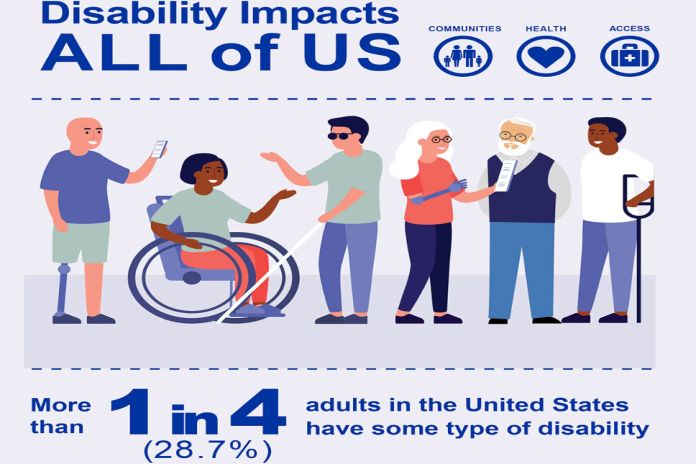ATLANTA, USA – Centers for Disease Control and Prevention (CDC) released the annual update to the Disability and Health Data System (DHDS), providing quick and easy online access to state-level health data on adults with disabilities. The latest data, from the 2022 Behavioral Risk Factor Surveillance System (BRFSS), reveal that more than 1 in 4 – over 70 million – adults in the United States reported having a disability in 2022.
For the first time, the 2022 BRFSS collected data on experiences with Long COVID, defined as symptoms lasting three months or longer that the person did not have before COVID, to help us better understand the relationship between disabilities and Long COVID. Of particular concern is the finding that Long COVID symptoms were more prevalent among people with disabilities (10.8%) than among those without disabilities (6.6%).
While Long COVID can occur in anyone who gets a SARS-CoV-2 infection (the virus that causes COVID-19), data show that some people or groups of people are at higher risk of developing Long COVID. Some people with disabilities may be more likely to get very sick from COVID-19, or other respiratory viruses, because of underlying medical conditions, congregate living settings, or systemic health and social inequities.
CDC continues to collaborate with clinicians, public health partners, and other federal agencies to better understand the impacts of Long COVID, more generally, and, given the data, better identify and support the needs of people with disabilities. CDC continues to recommend that vaccines are the best protection against the potentially serious outcomes of COVID-19.
Additional DHDS findings
- Older adults reported a higher disability prevalence (43.9% of people aged 65 years and older) compared to other age groups.
- When examining disability status by race/ethnicity, the groups with the highest prevalence (both 38.7%) identified as American Indian or Alaska Native and Other/Multirace.
- CDC has state profile fact sheets that provide an overview of disability in each state, including the percentages and characteristics of adults with and without disabilities.
- Click on any state listed here to view that state’s profile.
These findings underscore the fact that people with disabilities are a large part of every community and population. Many of us know, or are, someone with a disability, and disability inclusion is beneficial for all. As we commemorate the upcoming 34th anniversary of the Americans with Disabilities Act on July 26, it’s important to remember disability is not a health outcome; it is part of the way people experience life, such as hearing, seeing, moving, processing information, and caring for oneself.
CDC reaffirms its commitment to enhancing disability representation in public health data to better plan and prepare for their needs during emergencies. To address this issue, CDC is collaborating with partners to enhance inclusion of disability in emergency department surveillance and improve efficiency and accuracy of information reported by local health agencies during emergencies. By investing in these initiatives, CDC aims to strengthen national, state, and local response capacity for detecting and monitoring the health and well-being of people with disabilities during current and future public health emergencies.





